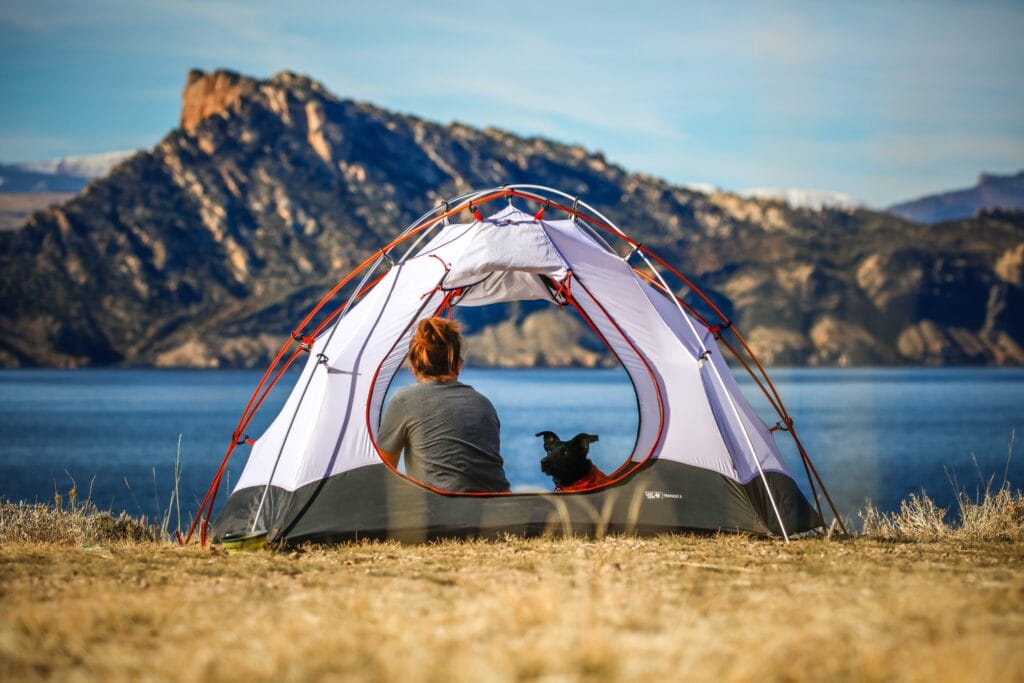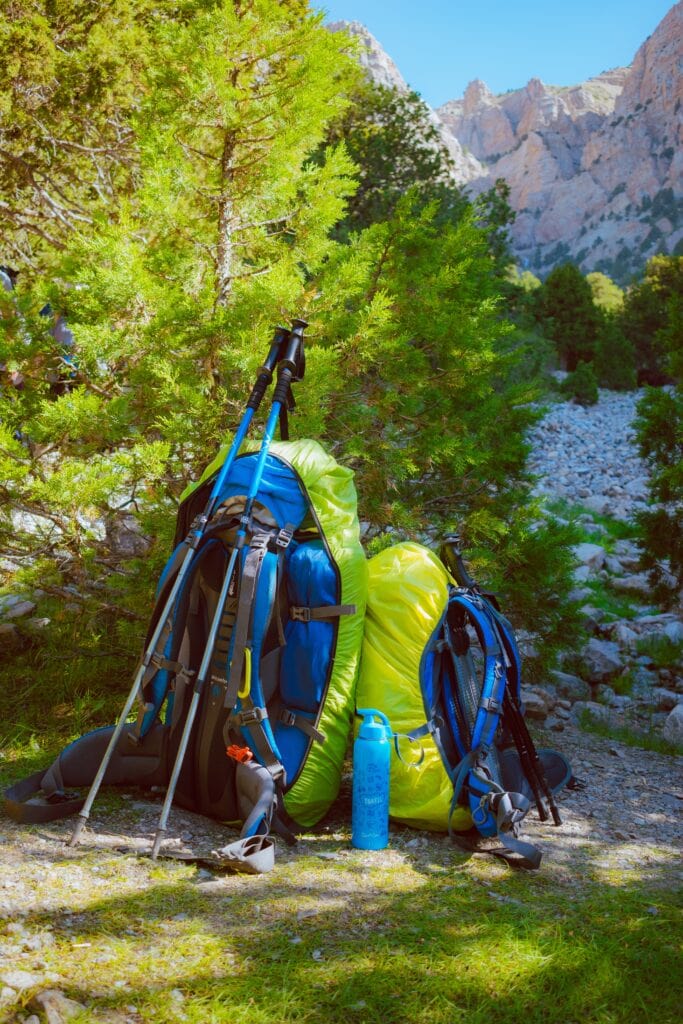If you’re planning a camp or hike, it’s essential to understand how to pack your backpack correctly. Incorrectly packing your backpack can lead to back pain and strained muscles. You will enjoy every outdoor experience even more with the proper packing techniques.
Packing a tent for backpacking can seem intimidating, especially if you are a beginner.
But with a bit of practice, you can easily and securely pack your tent for your next backpacking adventure.
This article walks you through the steps for packing a tent for backpacking. You will also learn how to choose your backpack, organize your gear, and secure the tent in place.
By following these tips, you will find it easier to prepare your things for a comfortable and successful backpacking trip.

Method 1: How to Pack a Tent Inside Your Backpack
-
Pick the Right Backpack
Your choice of backpack must accommodate your tent and other items conveniently. Backpacks with internal frames can help you maximize space. They have more room than backpacks with external frames. So you can fit more items inside them.
Additionally, you must consider the size of your tent when choosing the backpack. Bigger tents require more oversized backpacks. You can also get a compression bag to make it easier to pack tents as tightly as possible.
-
Prepare the Tent and Its Components
It is best to avoid packing a wet tent for your backpacking trip. Wet tents can be heavy and difficult to carry. Once your tent is dry, lay it out on a flat surface to its entire length.
Next, keep the tent poles and pegs in their bags. As you pack, you will need the poles to give shape and support to the tent.
-
Roll the Tent With the Poles
Adjust the tent so that it has the same width as the tent pole bag. This way, you can fit the tent into the bag more easily. Start rolling the tent. After a few rolls, put the pole bag and the tent peg bag and fold them up. Try to fold the tent as evenly as possible so that you have a tidy and easy to manage package. Ensure the points of the tent pole are not jutting out of the package.
When you are satisfied with the package, put it in a compression sack. Doing this will reduce the size of your tent by squeezing out excess air. Therefore, you have extra space for other gear in your backpack.
-
Put the Tent Inside the Backpack
It is a good idea to keep your tent easily accessible in your backpack. Set it up quickly while hiking. When packing the tent in your backpack, consider the weight and size of your other items. Try to distribute the weight evenly throughout the pack. You should place heavier items towards the bottom of the bag. Lighter items, especially essential ones, should come toward the top.
Placing your tent in the middle of the pack is also a good idea to help distribute the weight evenly. It helps to reduce the strain on your back. You will likely not carry anything heavier than your tent. Therefore, placing it in the middle of the pack can help balance the weight of your pack. You can also consider putting your sleeping bag at the bottom of the pack, with the tent just above it.
You have two options as regards the placement of your tent in the backpack: vertically or horizontally. Storing your tent vertically allows you to remove the tent quickly when unpacking. With the tent in the horizontal position, you can place other essential items on top of the tent. Ultimately, the best position for your tent will depend on the size and layout of your backpack and the other things you are packing.
Method 2: How to Pack a Tent Outside Your Backpack
-
Choose an External-Frame Backpack

External-frame backpacks allow you to attach gear to the outside of the pack easily. With that, you get more space inside for other items. However, an internal-frame backpack with many compression straps would also work.
Make sure the backpack is large enough to carry all your gear. And this list of equipment includes your tent, sleeping pad, and other essentials. However, you should note that an external-frame backpack may not be as comfortable as an internal-frame backpack. But there are still features you can look for to increase comfort. You consider a pack that features padded shoulder straps and a hip belt.
-
Prepare the Tent
Prepare the tent like you would for packing inside your backpack. Ensure your tent is dry and the poles are safe in their bag. Fold the poles and stakes in the tent, ensuring the poles fit nicely inside the bag.
-
Keep It in a Waterproof Tent Bag
Use a waterproof stuff sack to store your tent. It can be an excellent way to keep your tent safe from rain. Waterproof bags, such as zip-lock bags or dry bags, can help keep your tent dry while it is packed up in your backpack. Utilizing these waterproof bags is crucial if you are planning to backpack during the rainy season. A wet tent can be challenging to set up and can take a long time to dry out.
However, note that some tents are waterproof. So it may seem unnecessary to use a waterproof bag. If you have a tent with a fully-sealed rain fly, it should be able to withstand moderate rain.
Regardless of the quality of your tent, it is always a good idea to take precautions to protect your gear from the elements.
-
Fasten the Tent to the Backpack With Closed-Loop Ties
When packing a tent outside of your backpack, we advise that you place it at the bottom of the backpack. It distributes the weight better and makes walking easier while carrying the backpack. Positioning the tent at the top can make the pack feel awkward and top-heavy.
Using closed-loop ties on your backpack can be an excellent way to secure your tent to the outside of your pack. This ties the thread through closed loops on both ends. Therefore, it creates a secure connection that is unlikely to loosen. And this can help keep your tent from sliding off or becoming detached.
To use closed-loop ties, simply thread one end of the tie through the closed loop on the tent. Then thread the other end through the closed loop on your backpack. Tighten the knot to secure the rolled tent in place.
Other Tips for Packing a Tent
-
Consider the Risks of Packing a Tent Outside the Backpack
You must consider some risks when packing a tent outside your backpack. Firstly, packing a tent on the outside of your backpack can expose it to potential damage. Branches, rocks, and other rough terrain can damage your tent when you hike. And this can cause tears or punctures in the tent’s fabric. Consequently, it can affect your tent’s waterproofing and overall performance.
Furthermore, there is a higher chance of your tent falling if it is not adequately secured to the pack. And this can affect your trip, especially if you are in a remote area and do not have a backup plan.
Packing a tent on the outside of your pack can also make it more difficult to carry, as the tent will add extra weight and bulk to the pack. Therefore, this excess weight can lead to fatigue and discomfort on the trail.
-
Split Up Your Tent and Its Components

Splitting your tent into pieces and packing them in different places can be a good strategy if you want to distribute the weight more evenly. If the tent is too bulky to fit in a single spot, you should try to split it. Doing this can also be helpful if you are sharing the load with a hiking partner and want to distribute the gear more evenly between the two of you.
First, lay it out on a flat surface to split your tent into pieces and pack them in different places. Then divide the tent into its main components: the rain fly, inner tent, and poles. Stuff the inner tent and other clean and dry components into the main compartment of your backpack.
Furthermore, attach the rain fly and poles to the top of the pack using closed-loop ties. Then pack the other gear into the pack. The poles can go into the waterproof bag too. Then, you can keep them in a side pocket. But you must ensure they are secure and cannot fall out while hiking.
-
Practice at Home
Practicing at home can be an excellent way to ensure that you know how to attach it to your backpack securely. You can practice different methods to decide which suits you best.
Practicing is especially important if you are planning to pack the tent on the outside of your backpack. It will let you determine how best to arrange your tent and other items.
In addition, you can practice closed loop ties or another secure knot to attach your tent effectively. You also get to test the tent to ensure it stays in place when you move the backpack around.
While practicing, you do not just test your tent but also all the other gear you will be taking with you on your adventure. Practice how you pack everything effectively.
By practicing packing your tent at home, you can ensure that you have a comfortable and successful trip.
Conclusion
It is vital to keep your packing choices in mind when you are preparing for a backpacking trip. Take only the essentials, and most importantly, your tent, before leaving home.
Packing a tent for backpacking requires careful planning and consideration. By choosing the right backpack to pack the tent securely, you are on the right track to a comfortable and successful backpacking trip. Whether you decide to pack your tent inside or outside of your pack, these basic steps will help pack your tent efficiently and effectively.




